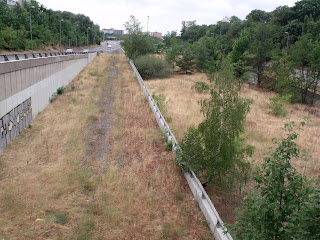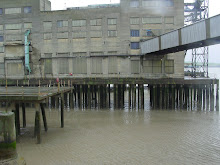

We went to this event today by Townley and Bradley at First Site in Colchester. They were exploring how having children has changed their practice and become part of their practice.
The session was mixture of play, films, presentation and discussion. In the talk they used a mixture of powerpoint and banners. Bradley said that 'Banners were like a medieval powerpoint' which I really liked. One of the slogans was 'sensual engagement conceptual rigour'. It is interesting thinking about how people of all ages experience things sensually and how that physical engagement could be seen as part of most successful art. The conceptual rigour part is essential, but there is also no reason to think that children are not capable of this. Interestingly though Townley and Bradley were very clear about their children not being artists.
A theme in the talk was children as curators. Townley had made some great drawings (1 a day) of how their children place objects in relation to one another, and in the discussion afterwards we spoke about the huge attachment that children have to the physical, material presence of objects. They often like to be close to particular objects physically, like carrying a special stone to bed with them.
Another thing I really liked was they started the talk with a banner which was a simplified spread sheet of their accounts for the last year. It was good that they acknowledged the interconnectedness of the challenge of supporting your family and being an artist, and how that influences the work you might make.
S






















